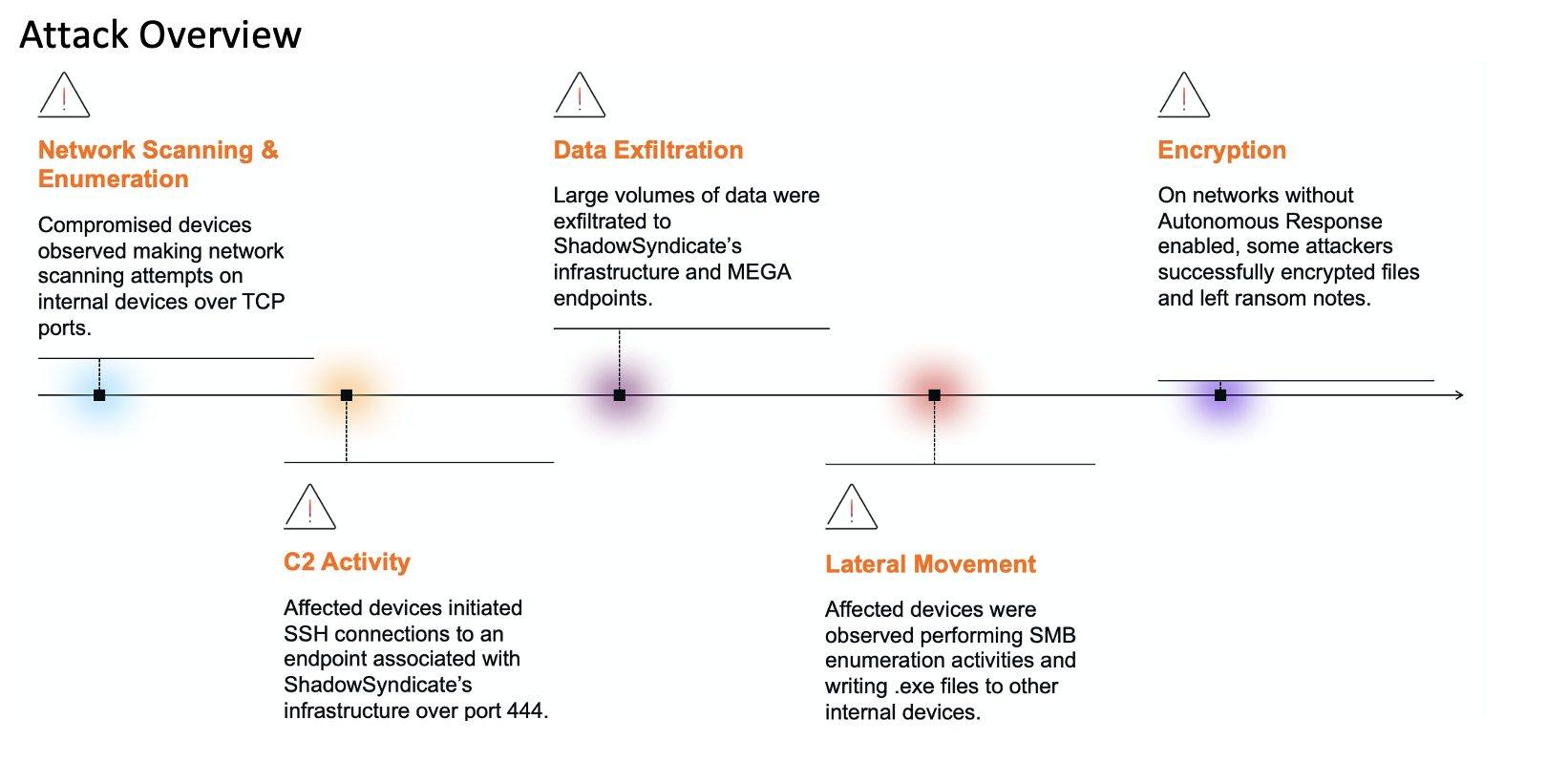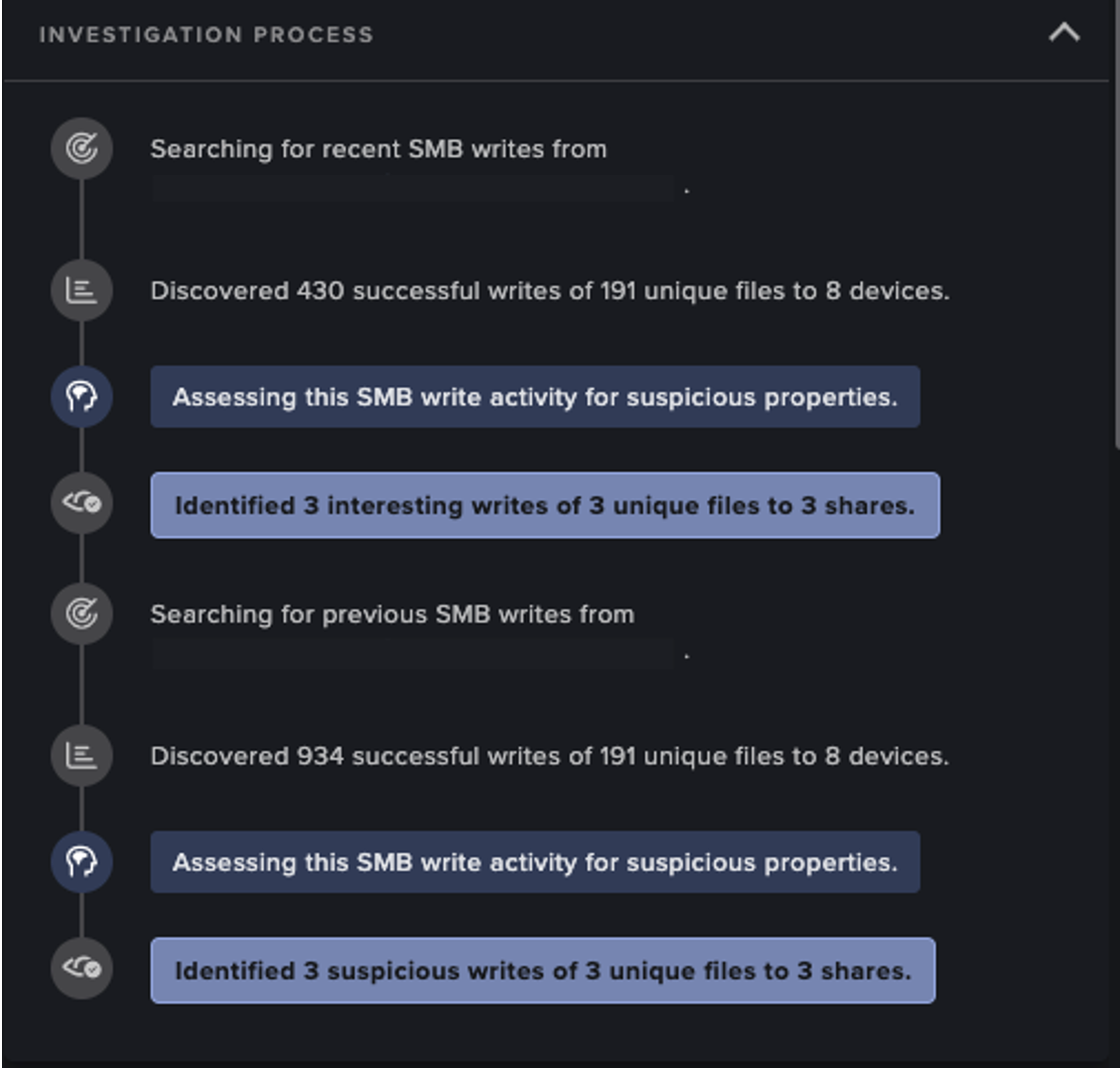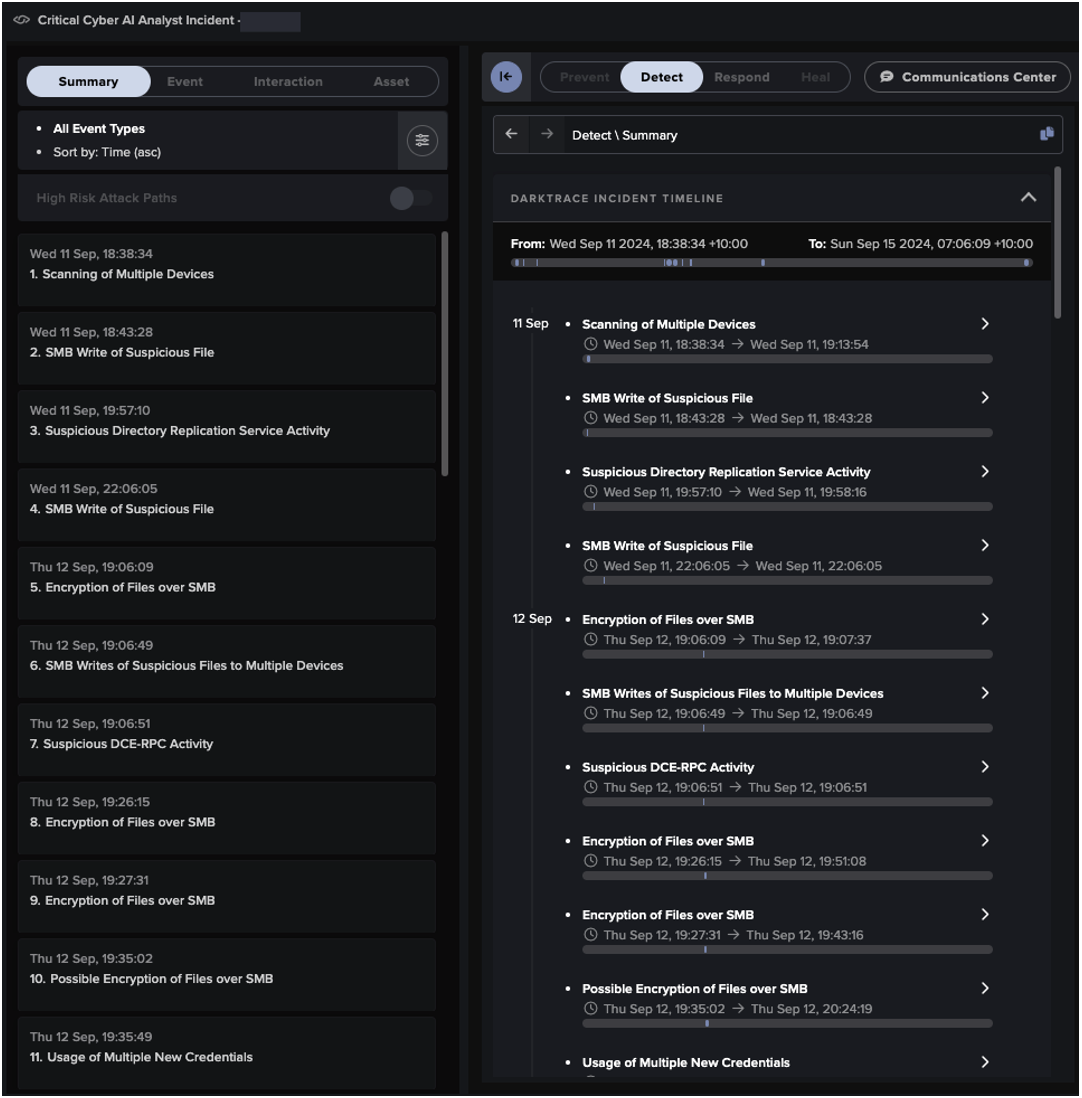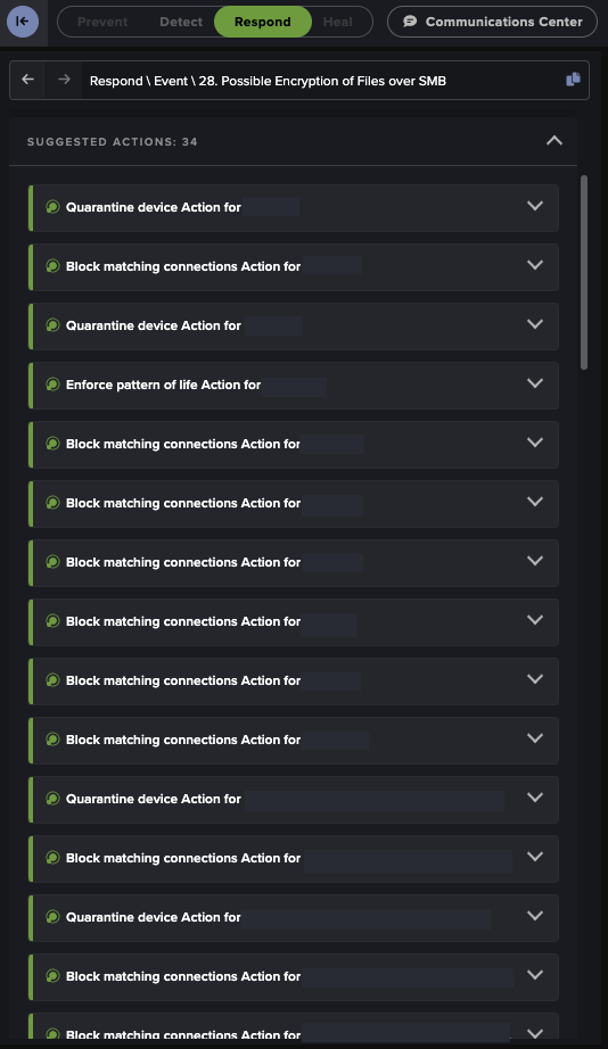The exploitation of SaaS platforms
As businesses continue to grow and evolve, the need for sharing ideas through productivity and cloud Software-as-a-Service (SaaS) platforms is becoming increasingly crucial. However, these platforms have also become prime targets for cyber attackers.
Threat actors often exploit these widely-used services to gain unauthorized access, steal sensitive information, and disrupt business operations. The growing reliance on SaaS platforms makes them attractive entry points for cybercriminals, who use sophisticated techniques such as phishing, social engineering, and malware to compromise these systems.
Services like Microsoft 365 are regularly targeted by threat actors looking for an entry point into an organization’s environment to carry out malicious activities. Securing these platforms is crucial to protect business data and ensure operational continuity.
Darktrace / EMAIL detection of the phishing attack
In a recent case, Darktrace observed a customer in the manufacturing sector receiving a phishing email that led to a threat actor logging in and creating an email rule. Threat actors often create email rules to move emails to their inbox, avoiding detection. Additionally, Darktrace detected a spoofed domain registered by the threat actor. Despite already having access to the customer’s SaaS account, the actor seemingly registered this domain to maintain persistence on the network, allowing them to communicate with the spoofed domain and conduct further malicious activity.
Darktrace / EMAIL can help prevent compromises like this one by blocking suspicious emails as soon as they are identified. Darktrace’s AI-driven email detection and response recognizes anomalies that might indicate phishing attempts and applies mitigative actions autonomously to prevent the escalation of an attack.
Unfortunately, in this case, Darktrace was not configured in Autonomous Response mode at the time of the attack, meaning actions had to be manually applied by the customer’s security team. Had it been fully enabled, it would have held the emails, preventing them from reaching the intended recipient and stopping the attack at its inception.
However, Darktrace’s Managed Threat Detection alerted the Security Operations Center (SOC) team to the compromise, enabling them to thoroughly investigate the incident and notify the customer before further damage could occur.
The Managed Threat Detection service continuously monitors customer networks for suspicious activities that may indicate an emerging threat. When such activities are detected, alerts are sent to Darktrace’s expert Cyber Analysts for triage, significantly speeding up the remediation process.
Attack Overview
On May 2, 2024, Darktrace detected a threat actor targeting a customer in the manufacturing sector then an unusual login to their SaaS environment was observed prior to the creation of a new email rule.
Darktrace immediately identified the login as suspicious due to the rarity of the source IP (31.222.254[.]27) and ASN, coupled with the absence of multi-factor authentication (MFA), which was typically required for this account.
The new email rule was intended to mark emails as read and moved to the ‘Conversation History’ folder for inbound emails from a specific domain. The rule was named “….,,,”, likely the attacker attempting to setup their new rule with an unnoteworthy name to ensure it would not be noticed by the account’s legitimate owner. Likewise, by moving emails from a specific domain to ‘Conversation History’, a folder that is rarely used by most users, any phishing emails sent by that domain would remain undetected by the user.

The domain in question was identified as being newly registered and an example of a typosquat domain. Typosquatting involves registering new domains with intentional misspelling designed to convince users to visit fake, and often malicious, websites. This technique is often used in phishing campaigns to create a sense of legitimacy and trust and deceive users into providing sensitive information. In this case, the suspicious domain closely resembled several of the customer’s internal domains, indicating an attempt to impersonate the organization’s legitimate internal sites to gain the target’s trust. Furthermore, the creation of this lookalike domain suggests that the attack was highly targeted at this specific customer.
Interestingly, the threat actor registered this spoofed domain despite already having account access. This was likely intended to ensure persistence on the network without having to launch additional phishing attacks. Such use of spoofed domain could allow an attacker to maintain a foothold in their target network and escalate their malicious activities without having to regain access to the account. This persistence can be used for various purposes, including data exfiltration, spreading malware, or launching further attacks.
Following this, Darktrace detected a highly anomalous email being sent to the customer’s account from the same location as the initial unusual SaaS login. Darktrace’s anomaly-based detection is able to identify threats that human security teams and traditional signature-based methods might miss. By analyzing the expected behavior of network users, Darktrace can recognize the subtle deviations from the norm that may indicate malicious activity. Unfortunately, in this instance, without Darktrace’s Autonomous Response capability enabled, the phishing email was able to successfully reach the recipient. While Darktrace / EMAIL did suggest that the email should be held from the recipients inbox, the customer was required to manually approve it.
Despite this, the Darktrace SOC team were still able to support the customer as they were subscribed to the Managed Threat Detection service. Following the detection of the highlight anomalous activity surrounding this compromise, namely the unusual SaaS login followed by a new email rule, an alert was sent to the Darktrace SOC for immediate triage, who then contacted the customer directly urging immediate action.
Conclusion
This case underscores the need to secure SaaS platforms like Microsoft 365 against sophisticated cyber threats. As businesses increasingly rely on these platforms, they become prime targets for attackers seeking unauthorized access and disruption.
Darktrace’s anomaly-based detection and response capabilities are crucial in identifying and mitigating such threats. In this instance, Darktrace detected a phishing email that led to a threat actor logging in and creating a suspicious email rule. The actor also registered a spoofed domain to maintain persistence on the network.
Darktrace / EMAIL, with its AI-driven detection and analysis, can block suspicious emails before they reach the intended recipient, preventing attacks at their inception. Meanwhile, Darktrace’s SOC team promptly investigated the activity and alerted the customer to the compromise, enabling them to take immediate action to remediate the issue and prevent any further damage.
Credit to Vivek Rajan (Cyber Security Analyst) and Ryan Traill (Threat Content Lead).
Appendices
Darktrace Model Detections
- SaaS / Access / Unusual External Source for SaaS Credential Use
- SaaS / Compromise / Login From Rare Endpoint While User Is Active
- SaaS / Resource / Unusual Access to Delegated Resource by Non Owner
- SaaS / Email Nexus / Unusual Login Location Following Sender Spoof
- Compliance / Anomalous New Email Rule
- SaaS / Compromise / Unusual Login and New Email Rule
Indicators of Compromise (IoCs)
IoC - Type - Description + Confidence
31.222.254[.]27 – IP - Suspicious Login Endpoint
MITRE ATT&CK Mapping
Tactic – Technqiue – Sub-technique of (if applicable)
Cloud Accounts - DEFENSE EVASION, PERSISTENCE, PRIVILEGE ESCALATION, INITIAL ACCESS - T1078.004 - T1078
Cloud Service Dashboard – DISCOVERY - T1538
Compromise Accounts - RESOURCE DEVELOPMENT - T1586
Steal Web Session Cookie - CREDENTIAL ACCESS - T1539
Outlook Rules – PERSISTENCE - T1137.005 - T1137





















